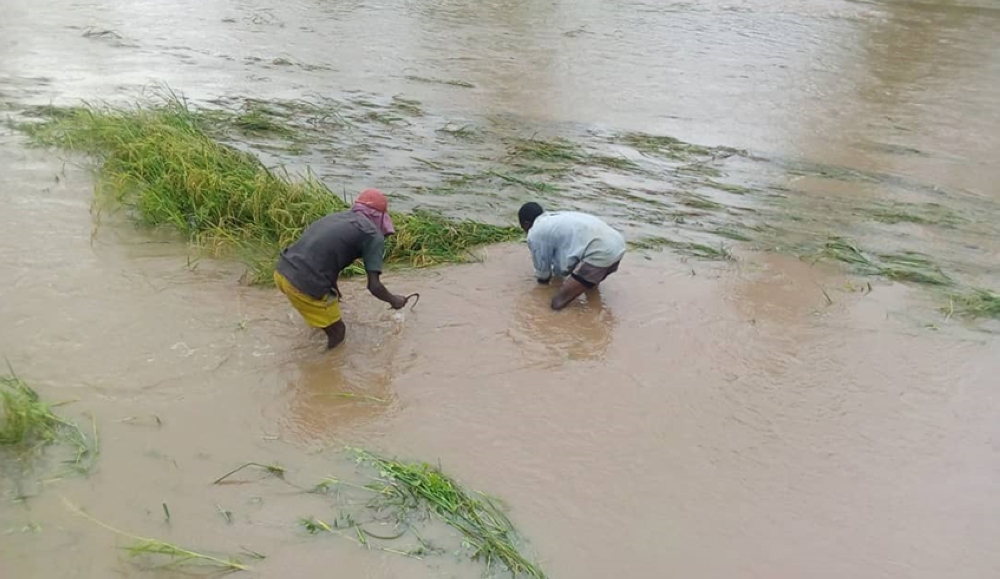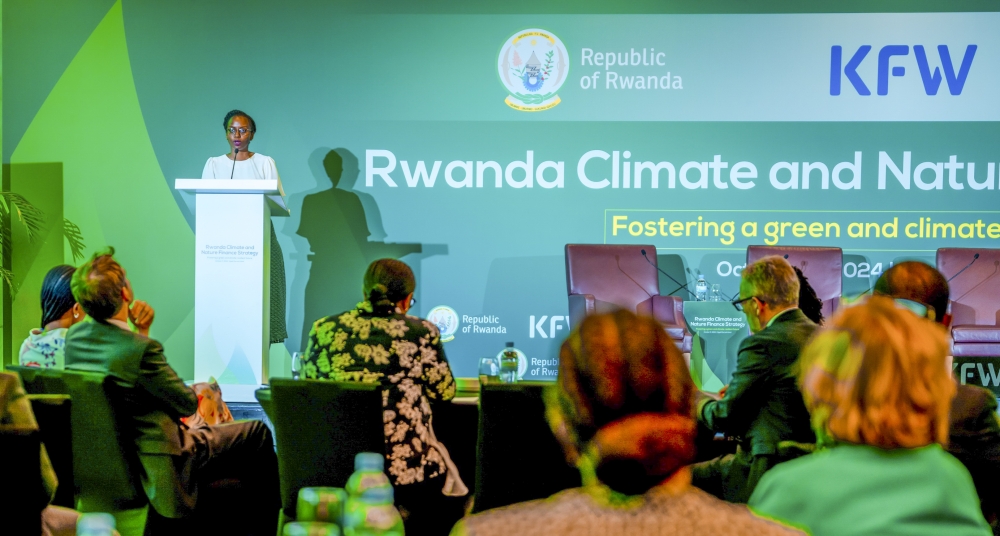

The Government of Rwanda on October 17 officially launched its climate and nature finance strategy (CNFS), a comprehensive framework designed to accelerate investment in climate action and nature conservation.
The strategy aims to position Rwanda as a leader in sustainable development, advancing both climate resilience and environmental preservation while supporting economic growth and social well-being. It seeks to align financial flows with the country’s ambitious climate goals under its Nationally Determined Contributions (NDCs) and Green Growth and Climate Resilience Strategy (GGCRS).
ALSO READ: Rwanda launches Climate and Nature Finance Strategy to spur private sector financing
"Climate resilience and nature conservation are two sides of the same coin. Our National Climate and Nature Finance Strategy will help us harness innovative financing solutions to achieve our sustainable development goals. By bringing together public, private, and international resources, we will unlock investments that safeguard both our environment and the livelihoods of our people," said Yusuf Murangwa, the Minister of Finance and Economic Planning, emphasizing the urgency of mobilizing both domestic and international resources to tackle the dual crises of climate change and biodiversity loss.


ALSO READ: Rwanda faces $7 billion funding gap to implement climate action plan
Below, we answer 10 key questions, to shed more light on the country’s Climate and Nature Finance Strategy.
1. What is Rwanda's Climate and Nature Finance Strategy?
Rwanda’s National Climate and Nature Finance Strategy outlines the country’s approach to mobilizing and managing financial resources for addressing both climate change and biodiversity conservation, with a focus on promoting sustainable development that benefits people and the environment.
2. What are the main objectives of the strategy?
The strategy aims to increase investment in climate action, ensure financial flows align with sustainable development goals, and strengthen institutional frameworks to enhance Rwanda's capacity to respond to climate and biodiversity challenges.
3. How does the strategy integrate climate and nature conservation goals?
The strategy promotes a holistic approach that recognizes the interdependence between climate resilience and ecosystem protection. It emphasizes investments in projects that deliver both climate and biodiversity benefits, such as reforestation, sustainable agriculture, and conservation of wetlands.
4. What financial mechanisms are included in the strategy?
The strategy leverages a combination of public, private, and international financing mechanisms, including green bonds, carbon markets, biodiversity credits, payment for ecosystem services, and blended finance to support climate and nature-related initiatives.
5. How does the strategy encourage private sector involvement in financing climate and nature-based projects?
The strategy introduces innovative fiscal and financial as favorable policies solutions designed to lower the perceived risks of investing in climate and nature projects.
These efforts aim to create a conducive environment for increased private sector involvement. It also promotes public-private partnerships and financial products designed to reduce the risk of investing in climate and nature projects.
6. What role does the Ministry of Environment, National Fund for the Environment (FONERWA) and Rwanda Environmental Management Authority play in implementing the strategy?
The Ministry of Environment will play a central role in driving the climate agenda alongside the Ministry of Finance and Economic Planning.
This includes mobilizing, managing, and disbursing funds for both climate and nature projects. FONERWA and REMA will serve as a conduit for international climate finance and supports local initiatives that align with national priorities in climate resilience and biodiversity conservation.
7. How does the strategy address biodiversity loss and ecosystem degradation?
The strategy prioritizes investments in nature-based solutions, such as habitat restoration, forest conservation, and sustainable land-use practices.
It promotes projects that mitigate biodiversity loss while enhancing ecosystem services, such as water purification and carbon sequestration.
8. What are the challenges to mobilizing finance for both climate and nature projects in Rwanda?
Key challenges include the limited availability of domestic financial resources, difficulties in accessing international finance, the need for greater capacity to design bankable projects, and the complexity of integrating climate and biodiversity goals into financial planning.
9. How does the strategy ensure accountability and transparency in managing climate and nature finance?
The strategy incorporates robust monitoring, reporting, and verification systems to track financial flows, assess the impact of funded projects, and ensure funds are used transparently and effectively for climate and nature outcomes.
10. How does the strategy align with international commitments like the Paris Agreement?
The strategy is designed to support Rwanda’s international climate and biodiversity commitments, including its Nationally Determined Contributions (NDCs) under the Paris Agreement and its targets under the Global Biodiversity Framework.


